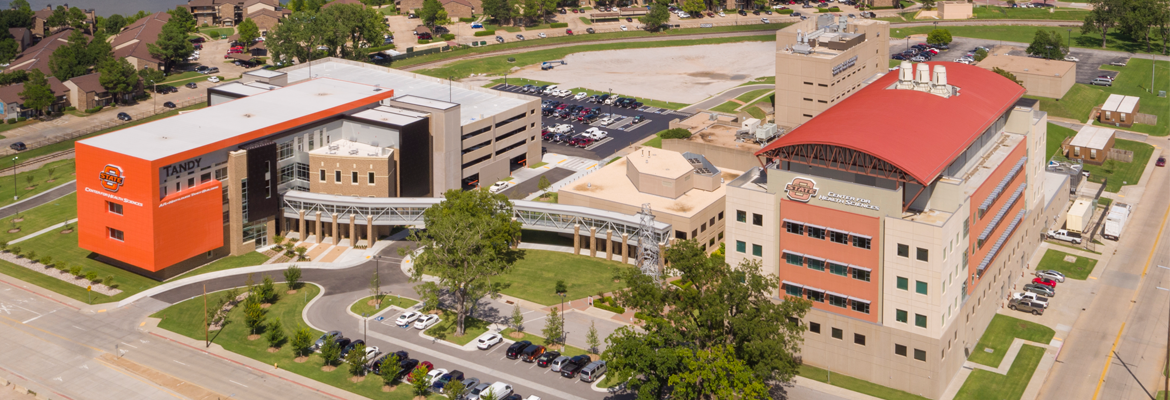
OSU-CHS research examines effects of massage therapy on muscle, tendon injuries
Thursday, January 25, 2018
Massage and stretch therapies are widely used to improve function following a musculoskeletal injury. Aric Warren, Ed.D., associate professor of athletic training at Oklahoma State University Center for Health Sciences, wants to document the efficacy of these treatments through evidence-based research.
“While these techniques are extremely popular around the country, there is a lack of research on the effectiveness of soft tissue mobilization therapy in human subjects,” he said. “Our patient-centered research explores the effects of these therapies in the treatment of muscular skeletal dysfunction. Our approach involves recording physiological measures and patient outcomes.”
Soft tissue mobilization refers to any form of manual manipulation of muscle tissue or surrounding tissues and structures in the body, such as stretching or massage.
Warren’s research team is among the first to use diagnostic ultrasound imaging to document and evaluate muscle response to soft tissue mobilization therapy, particularly in patients with hamstring and Achilles tendon injuries.
“Everyone has experienced an injury or muscle pull at some point in their life, either from participating in sports or being involved in a fall or accident,” said Warren, who is head of OSU’s School of Applied Health and Educational Psychology and a member of the USA Track & Field Sports Medicine staff. “This will also be one of the first studies specifically to document patient outcomes in individuals with hamstring or Achilles tendon problems, two of the most common injuries in sports.”
Warren’s preliminary studies have shown that patients with hamstring injuries treated with soft tissue mobilization therapy perceived increased flexibility, less pain and more function when compared to other treatments.
In addition to compressive treatments, Warren will examine myofascial decompression therapy in patients with muscle tightness and pain in the hamstring or Achilles tendon. Also known as cupping therapy, the practice is believed to increase blood flow and draw toxins from deep tissue by lifting and stretching the tissue through the use of suction.
“By studying myofascial decompression, we can determine whether lifting or exerting negative pressure around the muscle is effective in relieving pain and restoring function and range of motion,” he said.
In the future, Warren plans to conduct randomized clinical trials to further investigate the significance of manual manipulation treatment for musculoskeletal injury.
“Our primary goal in this research is to find better treatments for musculoskeletal dysfunction so that we can improve patients’ quality of life,” he said.
